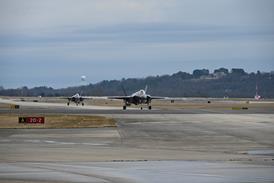Dassault leads European study of noise-reduction technologies as US team explores low sonic-boom demonstrator
A European Union-funded programme to study key technologies for a quiet supersonic aircraft has kicked off as US industry works with NASA to define a low sonic-boom flight demonstrator project.
Dassault is leading a team of 37 European partners in the four-year High Speed Aircraft (Hisac) project, funded under the EU's Sixth Framework Programme. "There is a kick-off meeting this month," says Olivier Villa, senior vice-president, civil aviation.
In the USA, meanwhile, the 10-company Supersonic Cruise Industry Alliance is beginning work on a NASA-funded concept exploration study to define a low-boom flight demonstration programme proposed for funding beginning with the agency's fiscal year 2006 budget.
Under Hisac, the Dassault-led team will study key technologies for a quiet supersonic aircraft, including engine integration, noise and pollution. Three designs, all below 68,000kg (150,000lb) gross weight, will be studied and the best one selected. The study "will define what is achievable in terms of performance, boom and noise together", says Villa.
The US industry alliance, which includes all the major aircraft and engine manufacturers, first proposed a sub-scale demonstrator integrating the technologies required for an economically viable quiet supersonic aircraft – including boom mitigation, engine integration, aerodynamics, structures and systems – but NASA could not afford the $1 billion price.
Now the group is working on a more modest, $150 million plan for a sub-scale low-boom demonstrator using airframe shaping, says Eric Brachhausen, vice-president of AmTech – a non-profit organisation engaged to facilitate collaboration by the consortium and the larger Super 10 Alliance, which teams industry with NASA, the US Federal Aviation Administration and the Department of Defense.
GRAHAM WARWICK / GENEVA
Source: Flight International























